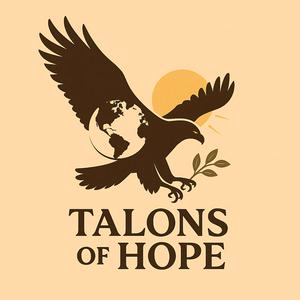From Mindanao to Leyte: Dr. Jayson Ibanez and the Flight to Save the Philippine Eagle
Talons of Hope: A Conversation with Dr. Jayson Ibanez – Saving the Soul of the ForestIn this powerful and moving episode of Talons of Hope, host Munir Virani speaks with Dr. Jayson Ibanez, the Director of Operations at the Philippine Eagle Foundation (PEF), a pioneering raptor biologist and champion of culture-based conservation. Their conversation delves deep into the remarkable efforts to save the critically endangered Philippine Eagle—a species that symbolizes both the ecological and cultural soul of the Philippines.Dr. Ibanez recounts his early fascination with birds of prey, which began during his university days and evolved into a lifelong mission to conserve the Philippine Eagle. He shares how a combination of academic training, fieldwork, and a deep respect for Indigenous knowledge systems shaped his unique approach to conservation. He also reflects on his journey as a scientist, from earning his PhD in Australia to returning home to apply both western science and traditional ecological knowledge in the service of saving the national bird.At the heart of the conversation is the historic release of two Philippine Eagles in Leyte, a bold move aimed at reestablishing the species in its former range. Dr. Ibanez explains the significance of this translocation: it is the first time in over a century that eagles born and raised in Mindanao have been introduced into the forests of Leyte, where viable eagle habitat still exists. This milestone was made possible by a groundbreaking partnership between the PEF and the Mohamed bin Zayed Raptor Conservation Fund (MBZRCF), whose support has helped breathe life into this ambitious initiative.Dr. Ibanez discusses the scientific foundation behind the project—how telemetry data from over 30 tracked eagles has informed habitat selection and release strategies. But just as critically, he outlines the human side of the effort: months of community consultations, social feasibility studies, public awareness campaigns, and trust-building with local and Indigenous leaders. The translocation wasn’t just about moving birds; it was about preparing the landscape—ecologically and culturally—to welcome them.The conversation touches on the broader vision of “culture-based conservation,” a philosophy that recognizes local communities not just as beneficiaries but as active stewards. Dr. Ibanez shares compelling stories of how engaging with ancestral domain holders, particularly the Bagobo Tagabawa community in Davao, has shifted the conservation narrative from conflict to collaboration. This approach, he argues, is the future of wildlife protection in biodiverse, human-inhabited landscapes.Dr. Ibanez also speaks to the challenges: the persistent threat of habitat loss, the tragic consequences of eagle shootings, and the hard-won lessons of working at the intersection of politics, ecology, and tradition. Yet he remains hopeful. With support from partners like MBZRCF, a new generation of Filipino conservationists, and growing national pride in the eagle as a living symbol of resilience, the path forward is clearer than ever.As the episode closes, Dr. Ibanez calls on listeners to act—not only by supporting Philippine Eagle conservation, but by embracing the deeper idea that saving a species is about saving stories, values, and ways of life. “Every eagle we protect,” he says, “is a message to future generations that we cared enough to keep the wild alive.”This episode is a testament to what happens when science is fused with spirit, and when hope becomes not just a feeling, but a strategy. Talons of Hope reminds us that the flight of a single eagle can carry with it the aspirations of an entire nation.
